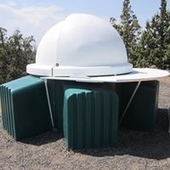
GrievousAngel
Full Member-
Posts
34 -
Joined
-
Last visited
Recent Profile Visitors
554 profile views
GrievousAngel's Achievements

Contributor (2/6)
22
Reputation
-
GrievousAngel started following Steve Herschbach
-
Which Frequency Is Running In Each Mode?
GrievousAngel replied to vive equinox's topic in Minelab Equinox Forum
“What you will find is there is no singular answer to the question you are seeking because the variables in play are simply too complex. I get the impression you are looking for the optimal frequency to detect . . . “ No not that at all. I found the science interesting, and I guess I was looking for a 'meaningful understanding' that made sense to me. I understood what -3db half-power was about in electrical power transfer and impedance matching, so I set out to see if my intuitive feel was accurate as applied metal detectors. It helped me understand why a specific frequency is better for a specific target, as opposed to accepting and putting to memory. Like why a dime reacts better to 2.7kHz than say 15kHz? Other than the manual says so. I'm kind'a weird in that way. I like understanding as opposed to running on 'blind faith' one may say. As you have mentioned, be careful to not get trapped in the technology thing. And you are right. The bottom line is to get outside and go detecting! I appreciate your comments. I need those 'checks and balances' to stay focused. Later, Billy BTW . . . I would really enjoy traveling to Nevada and detecting with you and others in that area. I've lived in CO's Eagle River Valley (I70) for over a year in 2013-14. I love the Western states. I'm hard to pinpoint at times, as I enjoy outdoor adventures and yet I'm into technical details, etc. I could learn so much out there! I live in SE Georgia, and raised my family on the Ogeechee River near Statesboro. I got a few articles to read now. Like I said, this is a great site to be part of. You and others have done an excellent job with it. -
Which Frequency Is Running In Each Mode?
GrievousAngel replied to vive equinox's topic in Minelab Equinox Forum
Steve and the rest of us . . . Without any doubt, this site is the 'Top-Drawer' source of accurate information, in all aspects of metal detecting - technical to use in the field! I'm totally impressed. There are so many knowledgeable detectorist hanging out on this site, who are eager to share information. I have an OK engineering background, but I'm short on actual use in the field. Thanks to all, Billy -
Which Frequency Is Running In Each Mode?
GrievousAngel replied to vive equinox's topic in Minelab Equinox Forum
Thanks for leads. I will knock on their doors soon. It is fortunate to be able to connect with others that truly have a 'meaningful understanding' of a given topic. Top-Drawer Experts! Later, Billy -
Which Frequency Is Running In Each Mode?
GrievousAngel replied to vive equinox's topic in Minelab Equinox Forum
I agree. Yes it can be confusing for sure, as the terms are often used loosely. Due to time and avoiding over-stating an accepted law in a more casual setting, you have to be careful how one might explain a concept. Yep, it is the 'special off-set' frequency at which the R-response component is at maximum level (magnitude) in which the detector receives and processes. Conceptionally I think of it as shifting the center frequency intended to be transmitted, up or down so it's at maximum magnitude when received. In terms of electrical power, -3db frequency point is called the half-power level, in which maximum power transfer is achieved via impedance matching. This law is also critical in microwave waveguide design, i.e., used in many engineering fields. My definitions and concepts were taken directly from the articles below. I should have referenced the sources in more detail. The article Signal Frequency And Multiple Frequency as found on this site, https://detectorprospector.com/forums/topic/3193-selectable-frequency-and-multiple-frequency/ was the entry point for my thread. This article also referenced George Payne from his article found at http://jb-ms.com/Baron/payne.htm (2002). I would suggest reading these articles if not already done so. I certainly improved my understanding of the science behind VLF frequency selection, single or multiple. Cool stuff! Billy One of the experts in this arena is George Payne as referenced in -
Which Frequency Is Running In Each Mode?
GrievousAngel replied to vive equinox's topic in Minelab Equinox Forum
Ok Steve, I guess I'll go down Dimitar's Tarsacci rabbit hole . . . just knock on the door to keep me from getting too lost! I was not aware of his work in any detail. I've noticed his name about but that's about it. Billy -
Which Frequency Is Running In Each Mode?
GrievousAngel replied to vive equinox's topic in Minelab Equinox Forum
Absolutely right Steve, it's held very close. Although, I wasn't chasing the received signal processing, e.g., electronic circuitry or the coding, I was more interested in understanding the science behind determining the optimum frequency (single or multi) to be transmitted for a given target. As I mentioned, I ran into the reference to George Payne's paper discussing the significance the -3db frequency shift up or down from the center transmitted frequency (per -3db half-power law ), where R magnitude is maximum and X magnitude is halved. Per Payne it turns out that the returned signal is maximum when at this -3db special frequency point. Therefore the VHF processing unit receives this optimum signal, in which improves it's performance substantially. (The amplitude(s) of these wave forms are easier seen in the frequency domain.) Thanks to your article Selected Frequency vs. Multiple Frequency, I have a much better understanding of the details surrounding the selection of a specific frequency for a specific target. That's the short version of why certain model detectors are better at certain targets ranges. The -3db Frequency point as a huge impact on the detectors design. A few days back, I did not have as clear of a understanding as I do now, but it ain't that clear . . . Steve your articles great. Thanks for sharing your knowledge of detectors, from use in the field to the technical aspects. I apologize for repeating some of my comments and references, but it's difficult to drop into a related thread without some premise. Later, Billy -
Which Frequency Is Running In Each Mode?
GrievousAngel replied to vive equinox's topic in Minelab Equinox Forum
I emailed Minelab referring to my interest in the -3db frequency half-power level and it's impact on receiving the maximum returned signal for processing. I also referred to the George Payne article that was referenced in the article named Single Frequency and Multiple Frequency. I just got a reply from Minelab engineering stating that information is not available for public consumption. So maybe it is deeply woven into Minelab's Multi-IQ weighting algorithms. From my limited point of view, it would seem logical. I've taken this about as far as reasonable plus I learned a little along the way. Thanks for your advice. Moving on. Billy -
. . . where two guys wandered around the USA detecting relics and coins? They used Garrett's AT detectors I think back. They would locate/research historical homes and other locations of interest, then ask for permission to hunt. There was a different story every week I think. I always thought that historic wagon train trails would cough-up great finds. I would assume one could travel the same pathway, either by road or off-round, with proper research and planning. I would like watch those shows again. Billy
-
What was the last meteorite found in the USA Mainland? How 'bout worldwide? 'Falling Stars' are visible every evening somewhere on this planet I would think, but finding them is something else of course. I used to watch Meteorite Men on the Science Channel years back. What were those cats names? Gregory maybe and one other guy. It always interest me . . . how meteorites were located and hopefully found. I remember one they found that was huge like maybe 3' in diameter. It wasn't from a recent fireball that someone saw falling. I always wondered why they were looking on this particular large farm & pasture land? It was like 6' deep. I think they were using a custom 2-box detector on wheels. It lay along the side of a long fence line. Did anyone see that particular Meteorite Men? Anyways meteorites are cool! Later, Billy
-
I gave my Garrett L&S PI to my grandson. I found it was basically a ‘dig everything’ detector that worked Well on saltwater beaches and most soils at good depth. Are there any other advice or tips I can pass on? i stopped using it has it a very heavy detector. Made like a tank but heavy! That is what led me to purchase the Equinox 800. Later, Billy







